© ROOT-NATION.com - Use of content is permitted with a backlink.
Today, we will discuss the German GEREON RCS ground robotic systems, which have proven their effectiveness on the battlefield in Ukraine.
In the fall of 2024, it was announced that the German government had funded the procurement of 30 GEREON RCS unmanned robotic platforms for the Ukrainian Armed Forces.
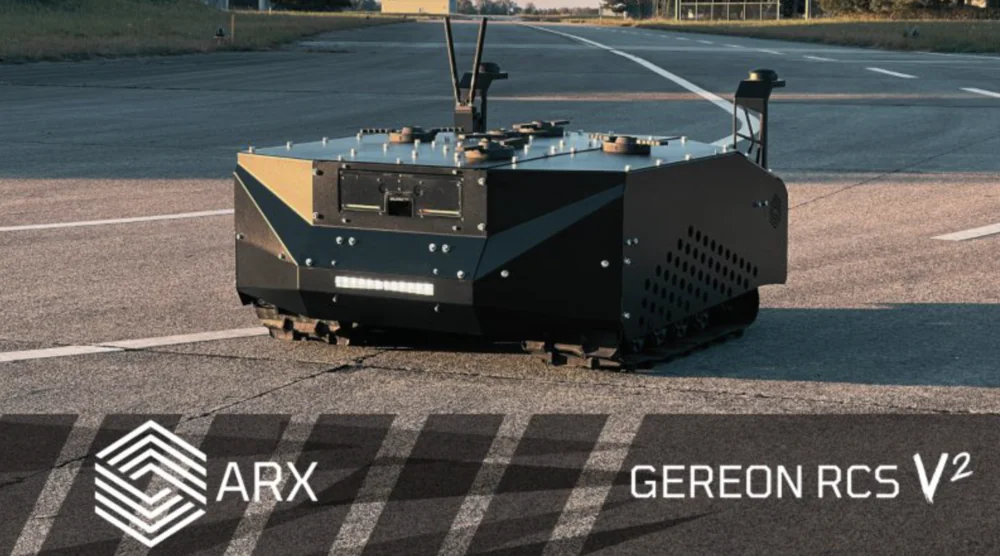
The GEREON RCS ground drones are produced by the German startup ARX Robotics. Mark Whitfeld, CEO of ARX Robotics, confirmed the signing of the contract at the time. According to him, the unmanned platforms were delivered to Ukraine by the end of 2024. Additionally, he promised to establish a maintenance center for these robotic systems in Ukraine.
Red also: Weapons of Ukrainian Victory: MAGURA V5 Maritime Drones
Why ground drones are needed in combat
Before diving into the specifics of the German robotic system GEREON RCS, let’s first explore why such technology is essential for the military.
Ground drones like the GEREON RCS play a crucial role in combat scenarios, taking on tasks that reduce risks for personnel while enhancing the effectiveness of military operations.
First and foremost, these systems serve as a practical solution for logistics and transportation. They can deliver ammunition, supplies, and medical aid to the front lines without putting soldiers at risk. Additionally, ground drones can evacuate wounded personnel to safety without exposing medics to danger.
Equipped with cameras, thermal imaging, and sensors, these drones are capable of conducting reconnaissance in challenging environments such as forests or urban areas. They help identify enemy positions while minimizing risks for reconnaissance teams.

Ground drones can also be deployed for detecting and neutralizing mines, explosives, and other hazardous devices, significantly reducing risks for demining units.
When equipped with combat modules such as machine guns or grenade launchers, these drones can engage enemy forces from a safe distance. Additionally, kamikaze drones can be used for striking enemy positions, providing a tactical advantage on the battlefield.
Ground drones can also be deployed for constructing obstacles, laying bridges, or clearing debris to create safe passage for troops. They can function as mobile radio stations or communication relays, enhancing coordination between military units. Additionally, they can be equipped with jamming systems to disrupt enemy drones and communications.
By increasing mobility and autonomy, ground drones reduce risks for personnel and enhance the effectiveness of combat operations. This makes them an indispensable asset in modern warfare.
Read also: Weapons of Ukrainian Victory: V-BAT Vertical Takeoff UAV
History of GEREON ground drones development
The development of Germany’s latest ground drones first came to light in late 2023. The project was initiated by ARX Landsysteme, a German startup officially founded in March 2023, specializing in robotics and defense technologies. Later, the company rebranded as ARX Robotics. Commissioned by the Bundeswehr, ARX Robotics began work on a modular robotic system named GEREON. From the outset, developers emphasized that these drones would be built using innovative materials to ensure a lightweight yet durable structure, capable of withstanding extreme conditions.
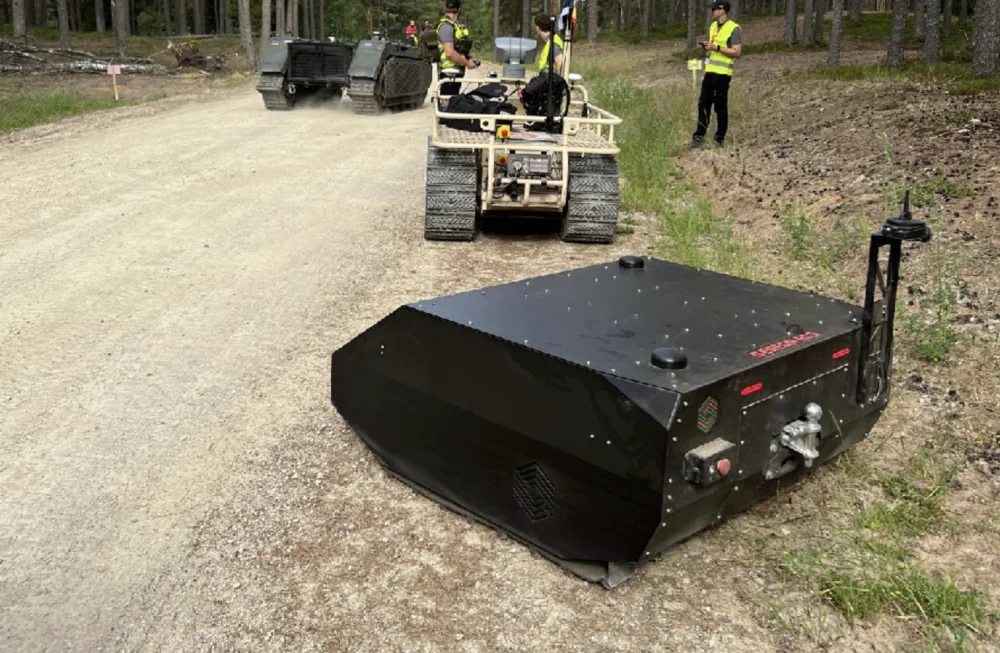
At the end of June 2024, Estonia hosted the first public presentation of the new unmanned ground vehicle (UGV) GEREON Robotic Carrier System (GEREON RCS). The event featured a demonstration of the system’s potential and capabilities, alongside ten other ground drones. The project received exclusively positive reviews, and shortly after, these advanced ground drones were officially adopted by the German military.
The developers noted early on that the armed forces of Western countries were not prepared for combat using robotic systems. To significantly improve the capabilities of military forces, a critical mass of autonomous unmanned ground systems, networked together, is needed—systems that can be produced easily and in a decentralized manner. ARX Robotics aims to contribute to European technologies by developing software-defined systems and producing adaptive equipment to meet the demand for reliable and autonomous unmanned systems.
In November 2024, the German government financed the purchase of 30 unmanned robotic platforms, GEREON RCS, for the Ukrainian Armed Forces. This meant that Ukrainian military personnel were the first to test the latest GEREON RCS ground drones in combat conditions. The developers had the opportunity to evaluate their robotic system directly on the battlefield to identify its strengths and weaknesses.

ARX Robotics has joined Diia City, a specialized legal framework in Ukraine aimed at supporting the IT sector, and plans to relocate part of its production and research to Ukraine. This move is intended to support local technological development and foster further cooperation between the German and Ukrainian defense industries.
It’s worth noting that the multifunctional tracked platform GEREON RCS features a modular design. It is capable of carrying various combat and payloads weighing up to half a ton. The ground drone can operate at distances of up to 40 km from its operator.
The unmanned platform family includes the GEREON 2, GEREON 2, GEREON ATR, and GEREON RCS models. They have already undergone experimental use within the Bundeswehr units.
Below, we will provide a more detailed overview of the GEREON RCS, but we’d like to briefly touch on the other three modifications as well.
The GEREON 2 is an ultra-light, multipurpose platform that can be quickly deployed and easily adapted for various combat tasks. It serves as a versatile tool for training, simulation, data collection through sensors, and the use of drones in advanced aerial operations. The platform is capable of reaching speeds of up to 10 km/h, covering distances of up to 20 km, and carrying payloads of up to 50 kg.
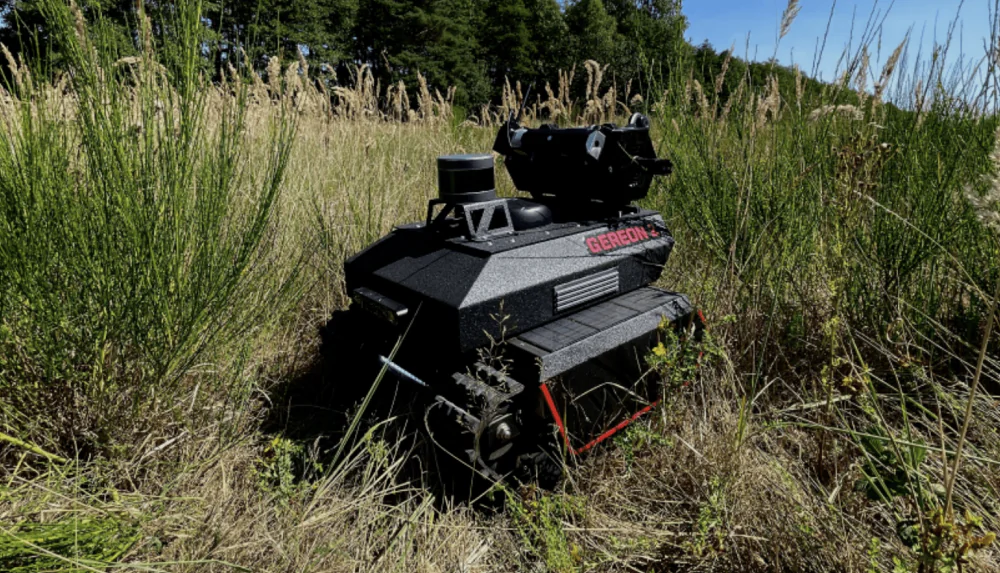
The GEREON 3 is a lightweight, multipurpose platform with a single-function design. It serves as a versatile tool for training and simulation, supports advanced data collection using sensors, and functions as a drone carrier for aerial operations and other tasks. The platform can reach speeds of up to 10 km/h, cover distances of up to 20 km, and carry payloads of up to 120 kg.
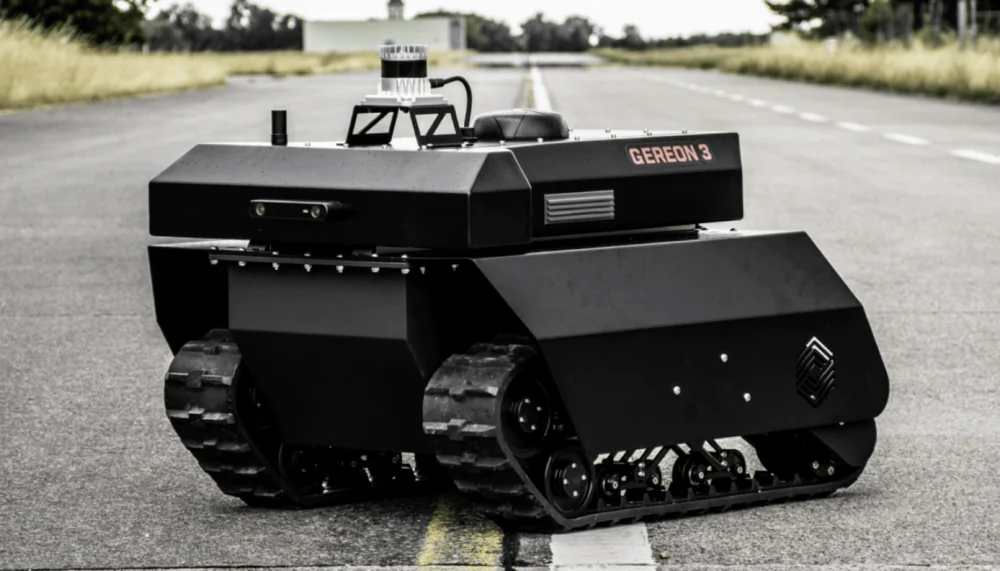
The GEREON ATR is a lightweight, autonomous armored target carrier. It is designed to withstand fire from combat weapons and provide unique simulation capabilities, effectively bridging the gap between training conditions and real combat scenarios. The platform features bulletproof protection, can reach a working speed of up to 8 km/h, and is capable of covering distances of up to 10 km.
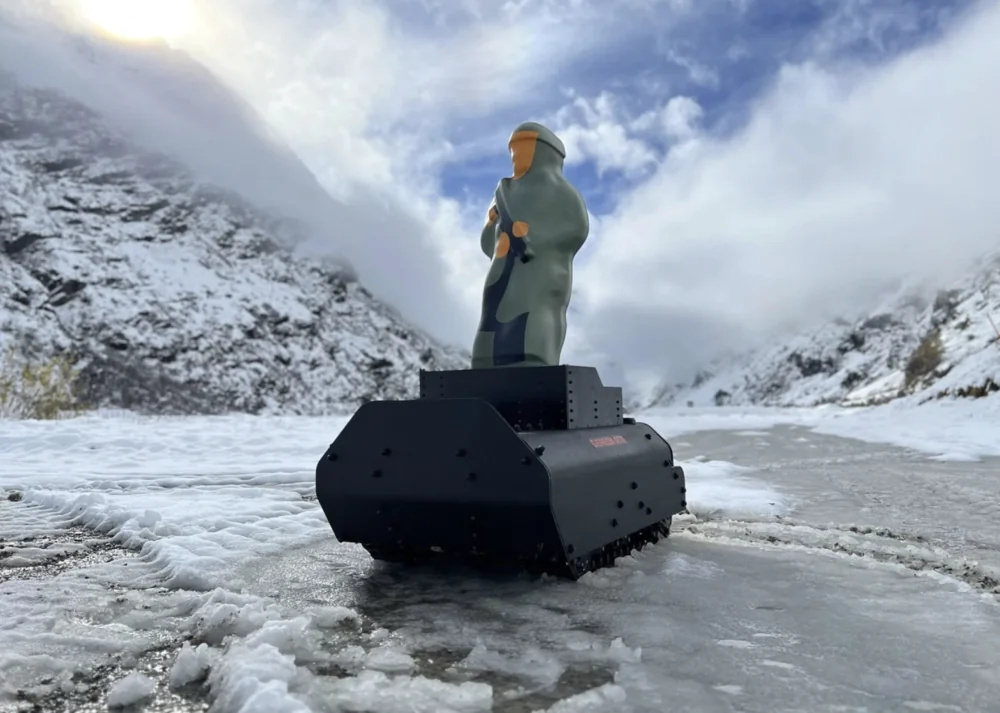
Read also: Weapons of Ukrainian Victory: The Tytan UAV – Drone Interceptor
Technical and functional features of GEREON RCS
The series of ground robotic platforms developed by ARX Robotics includes several models and modifications across different size categories. The foundation is a tracked chassis, onto which various platforms or modules can be mounted, such as remotely operated machine guns or grenade launchers. The smallest and most discreet transporters can function as kamikaze robots, while slightly larger ones are used for logistical and medical evacuation tasks.я.
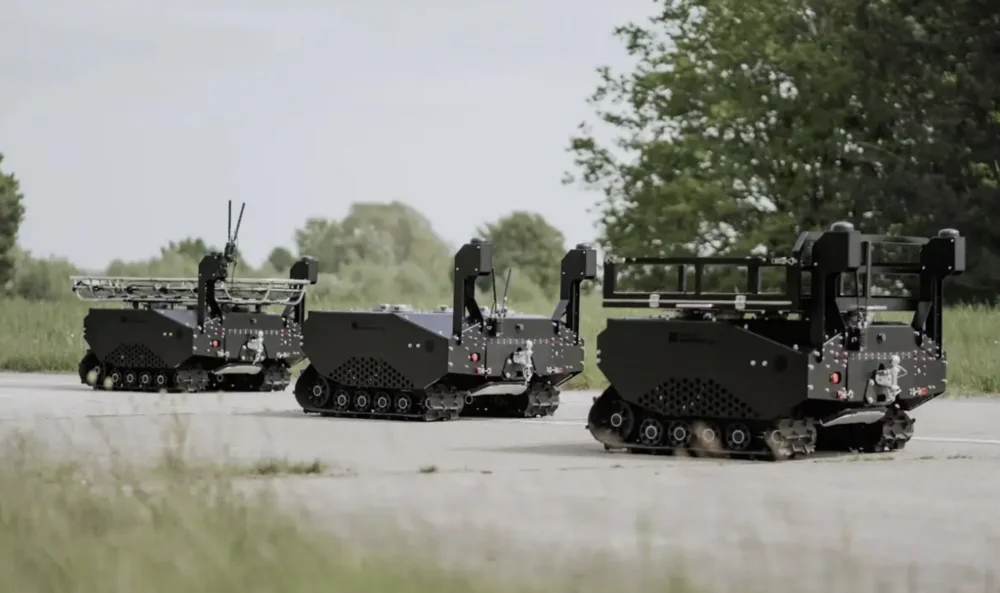
The GEREON RCS is a robotic control and monitoring system designed for use in defense and security operations. It is intended to provide high precision in managing unmanned platforms and performing tasks related to area and object surveillance. The system utilizes advanced sensors, including radar and electro-optical sensors, to ensure a high level of situational awareness and effectively detect potential threats.
The compact design of the GEREON RCS robotic system, measuring 141.5×131×73 cm, allows for easy integration with various vehicles used by armed forces worldwide. It has a maximum payload capacity of up to 600 kg and can travel up to 40 km on a single battery charge, moving from the rear to the frontline and back, transporting necessary supplies or evacuating wounded from the battlefield. Other sources indicate that the drone’s range is 50 km.
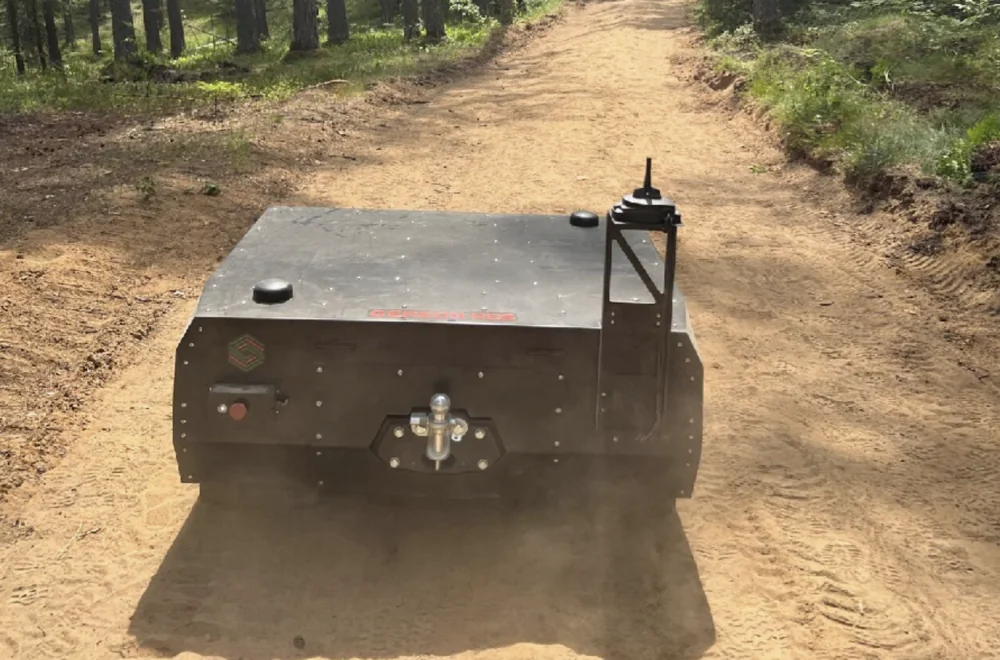
It is worth noting that the weight of the robotic system is 450 kg. It consists of small, modular, multifunctional unmanned ground vehicles that operate on a plug-and-play principle.
The average speed of this remotely controlled transporter is just 20 km/h, but this is sufficient for discreet movement. The GEREON RCS strikes a balance between power and maneuverability.
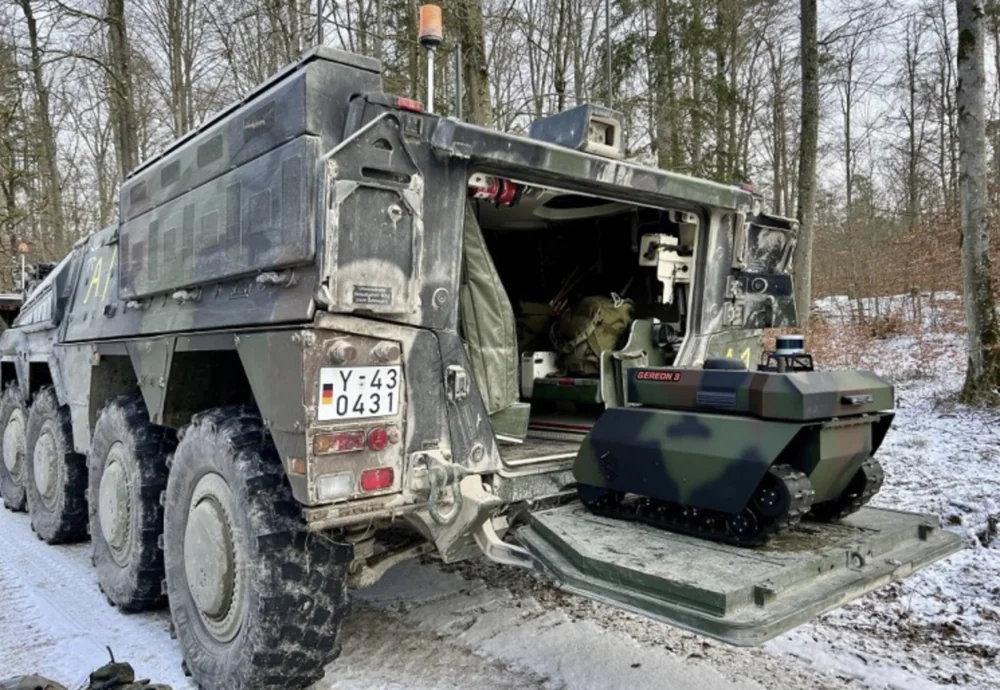
The GEREON RCS is designed for transportation on most vehicles used by armed forces in many countries and is adapted for integration with unmanned aerial systems. The developers also claim that it will be more affordable compared to other products in this class, which could potentially make it more accessible to a wider range of users.
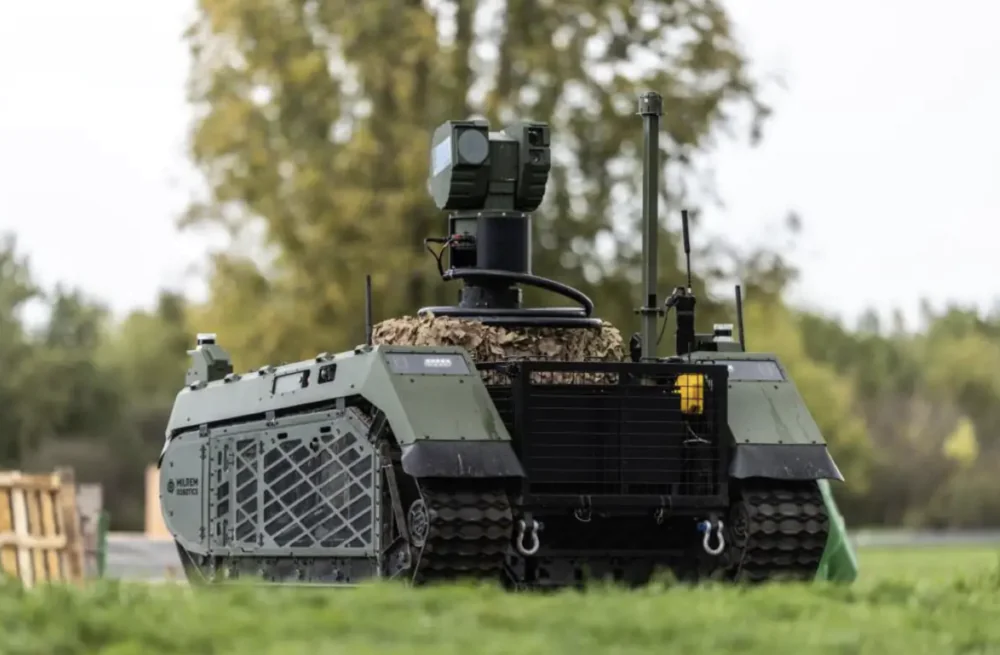
The robotic system is equipped with two GPS receivers and a set of LIDAR sensors. Thanks to the LIDAR, the GEREON RCS can map the terrain. Built-in modules provide intelligent functions that support movement along a pre-planned route or in follow mode (tracking a specific object, such as a soldier with a wireless controller or another vehicle). The drone can also autonomously avoid obstacles in the terrain.
These systems play a crucial role in multi-level reconnaissance and “robotic breakthrough” operations, specially designed for clearing obstacles in forested and urban areas. The primary focus is on using data collected by the sensors to enhance and complement existing artificial intelligence models.
Read also: Weapons of Ukrainian victory: Boxer RCT 30 infantry fighting vehicle
GEREON RCS features
Experts and military personnel highly assess the potential capabilities of the autonomous modular GEREON RCS system. The artificial intelligence allows the GEREON RCS drones to operate autonomously or with minimal operator control. This is crucial in situations where the operator cannot be nearby due to the risk of enemy fire.
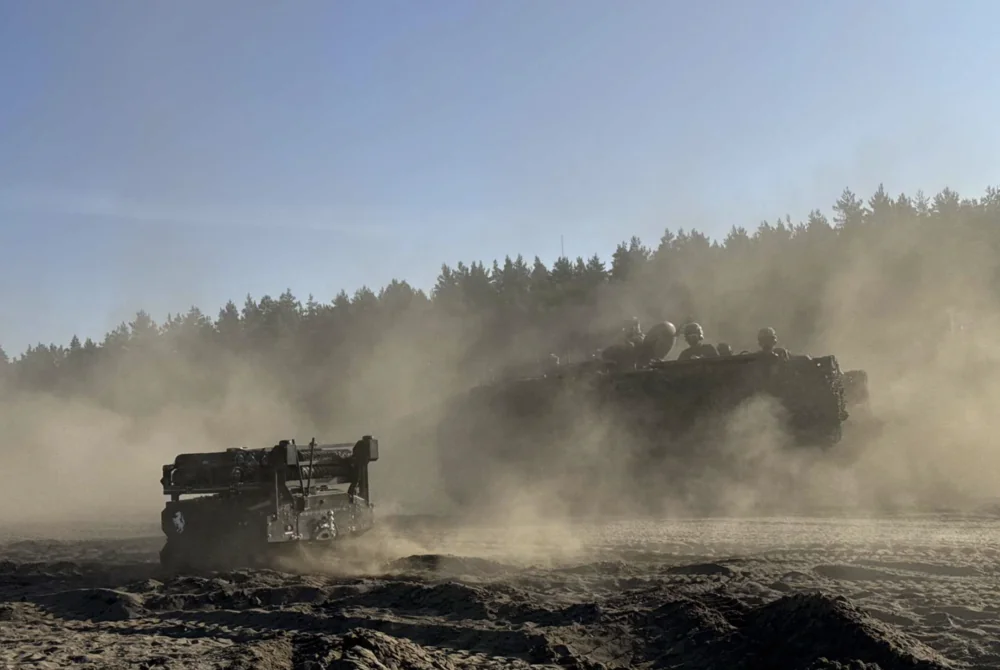
The system is also noted for its resilience to threats. The robotic platform is highly resistant to impacts, explosions, and other combat conditions, making it invaluable for transporting ammunition, food, or supplies to the front lines, as well as evacuating the wounded. These drones can be equipped with medical sensors to monitor the condition of the injured during transport, allowing for rapid first aid. The GEREON RCS is equipped with robust platforms or specialized mounts that secure stretchers with the wounded. Some models can even provide basic stabilization for casualties through specialized damping systems.
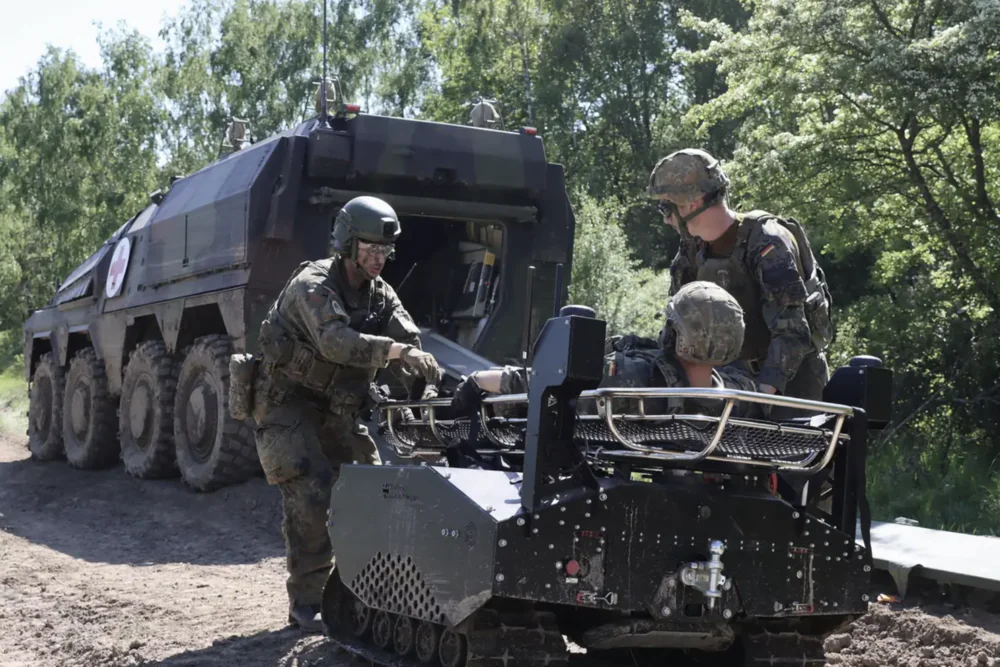
Additionally, the ground drones, whether on a tracked or wheeled base, are designed to operate in challenging conditions such as mud, snow, water, or rough terrain. This enables them to reach hard-to-access areas where standard vehicles cannot pass.
Read also: Weapons of Ukrainian Victory: Precision-Guided AGM-154 JSOW Glide Bomb
How GEREON RCS ground drones are used
Ground drones of this type have already found their application in various military forces around the world. They are used by the armed forces of Germany, France, the United Kingdom, and the United States.
There are many potential scenarios for their use. Primarily, such a robotic platform can be a valuable addition to tactical logistics. Drones can transport ammunition, water, and medical supplies to areas that are inaccessible to traditional means of transportation.
The GEREON RCS ground drones will also be indispensable for reconnaissance. Equipped with high-resolution cameras, they gather data about the terrain, detect enemy movement, and transmit real-time information.
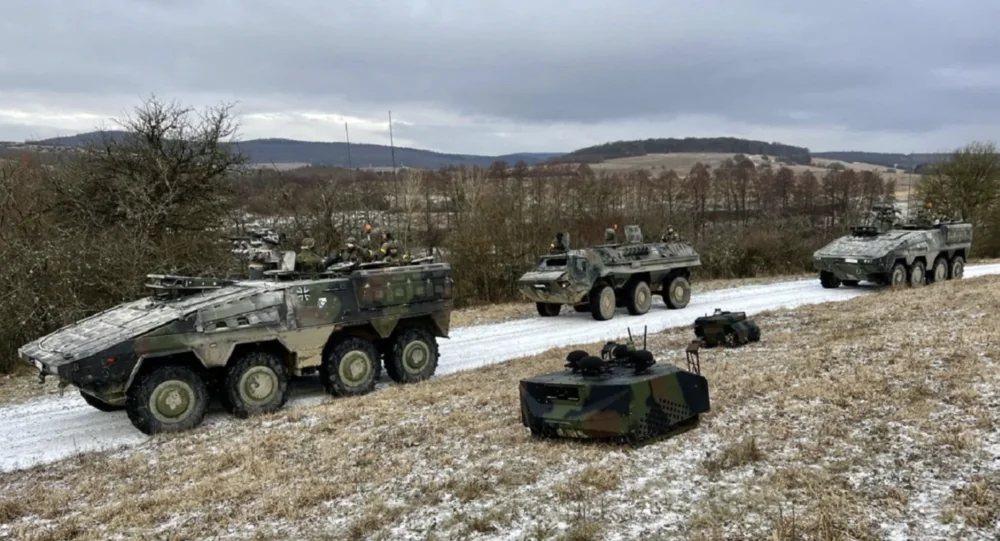
The GEREON RCS can also be used for landmine clearance. The robots effectively detect and neutralize mines using their sensors, enabling them to create paths through minefields or locate mines along roadways.
Such robotic systems play a particularly important role in the evacuation of wounded soldiers from the battlefield. Drones facilitate the transportation of personnel from dangerous zones without putting other military personnel at risk.
The transfer of GEREON RCS to Ukraine will open up new opportunities for saving lives in extremely difficult conditions. This is particularly important in areas where active shelling is ongoing. These drones will be able to deliver ammunition, food to the frontlines, and transport the wounded to safe locations without putting medics at risk.
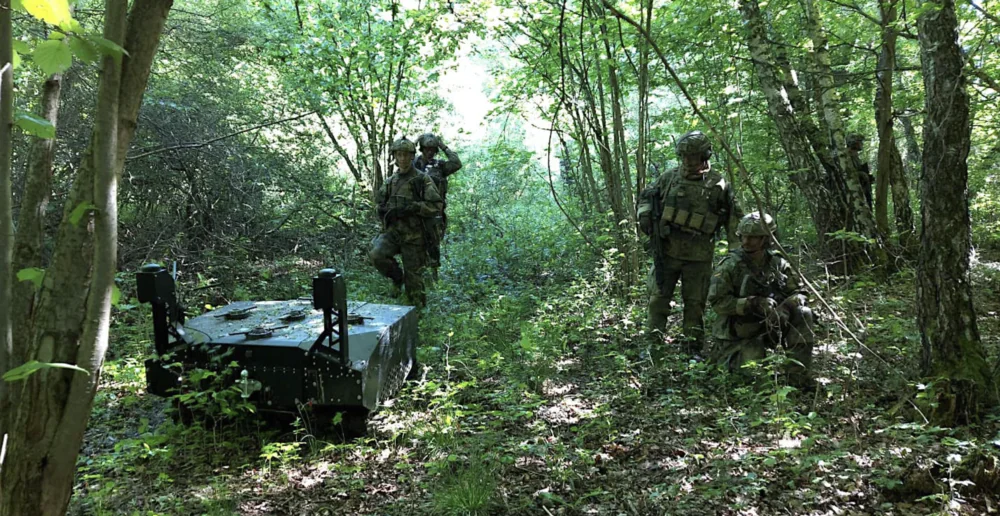
GEREON RCS integrates with various types of unmanned platforms, ensuring coordinated operation and the capability for autonomous missions in challenging conditions. Thanks to its modular architecture, the system can be adapted for different missions, including surveillance, object protection, and tactical operations. It is capable of operating in real-time and maintaining a high level of communication, making it a crucial tool for reducing risks and enhancing efficiency on the battlefield.

Ground drones can be used in urban combat conditions, where debris and building ruins create hazards for conventional evacuation vehicles. This technology significantly enhances the effectiveness of a unit in combat and helps save the lives of Ukrainian soldiers on the front lines. ARX Robotics also integrates turrets produced in Ukraine into its platforms and utilizes various communication methods, including Silvus radios, 4G/5G networks, and Starlink.
Read also: Weapons of Ukrainian Victory: Stridsbåt 90H (CB90) amphibious assault craft
Prospects for the Development of Unmanned Ground Vehicles in Ukraine
The fleet of Ukrainian drones includes models from both foreign and domestic manufacturers. The Estonian tracked UGV Milrem THeMIS has been in service since 2022, with at least 15 units of this equipment supporting operations such as cargo transportation, evacuation of the wounded, and route clearance.

Additional deliveries are also planned. Milrem has developed armed versions of the THeMIS for anti-tank and engineering tasks and plans to deploy over 200 units of THeMIS in Ukraine by the end of 2025.
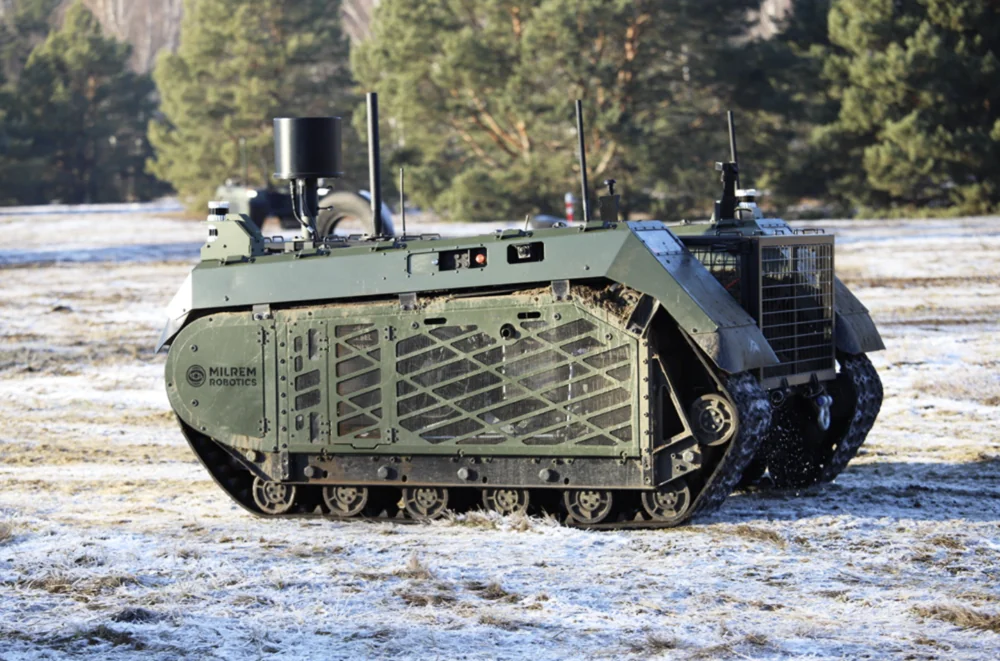
Meanwhile, Ukraine’s domestic defense industry, with the support of the government innovation program Brave1, has introduced new combat robotic systems. Armored 4×4 robots, such as the Ironclad and D-21, are equipped with turret-mounted machine guns and a remote weapon station “Shablya” for frontline combat and base defense.
Smaller unmanned ground vehicles (UGVs) are designed for offensive operations. This includes the Ratel-S, a compact 4×4 platform carrying two large anti-tank mines and programmed to detonate under enemy vehicles. This system is already in serial production. For logistics and support, Ukraine has deployed multi-purpose unmanned vehicles, such as the Gimli family — versatile unmanned platforms capable of performing a wide range of tasks in the harsh conditions of combat. They are used for transporting ammunition and equipment, as well as evacuating the wounded. These platforms, including domestically-produced unmanned ground vehicles like the Tarhan, have a good payload capacity of 150–200 kg and can be adapted for various tasks, including mobile fire support.
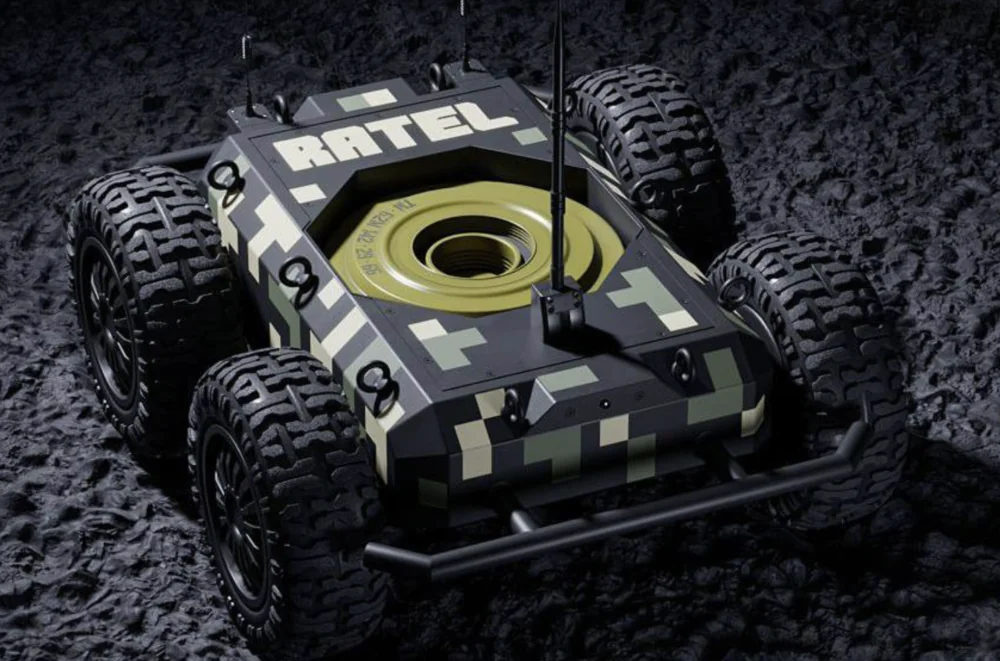
The production and deployment of unmanned ground vehicles (UGVs) are increasing in line with operational requirements. Defense officials report that in 2024, several thousand ground drones were purchased, with procurement expected to rise to tens of thousands in 2025. Ukrainian manufacturers are expanding production under state contracts, and the attack UGV Ratel-S began mass production at the end of 2023 after successful field tests. International suppliers are also ramping up their deliveries: the Estonian company Milrem Robotics has expanded its production capacity to 500 UGVs annually. Milrem Robotics prioritizes orders for Ukraine and aims to supply over 200 units of the THeMIS UGV throughout the year. To coordinate this expansion, Ukraine integrated robotic units into its brigades and established special unmanned systems forces at the beginning of 2024. Additionally, financial initiatives such as United24 support the acquisition of hundreds of unmanned ground vehicles (UGVs) for the Ukrainian Armed Forces. These efforts are part of a broader strategy that focuses on the use of robotic systems in reconnaissance, logistics, engineering, and combat operations in Ukraine.
Read also:
- Laser Weapons: History, Development, Potential, and Prospects
- Weapons of Ukrainian Victory: LAV 6.0 ACSV Armored Personnel Carrier

